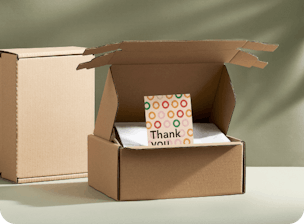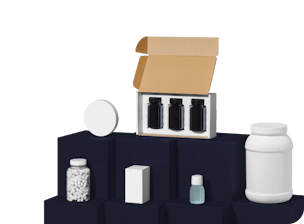When exposed to light, air, moisture and microbes, this product breaks down to natural elements found in nature.
Matching products
See all productsWhen exposed to light, air, moisture and microbes, this product breaks down to natural elements found in nature.
Definition
When exposed to light, air, moisture and microbes, biodegradable materials break down to natural elements that are found in nature.
While all materials can technically break down, many petroleum-based plastics take tens of thousands of years to do so and leave toxins in the surrounding soil. ‘Biodegradable’ products should biodegrade within a single generation, and leave nothing but water, carbon dioxide, naturally occurring minerals and biomass behind.
Materials are either 100% biodegradable or they are not. Terms like ‘x% biodegradable’ and ‘part-biodegradable’ are half-truths [1] , as the product will leave behind fragments that don’t break down in a natural environment.
The core principle of compostability is to leave soil enriched by the composting of a material. While similar, biodegradation and compostability are not the same: correct biodegradation adds no nutrients while not harming the soil.

Why you should use biodegradable packaging
A company may decide to use biodegradable packaging as an alternative to packaging that uses petroleum-based materials.
A company may also use biodegradable packaging if its values include having the smallest footprint as possible. If a company has biodegradable products, selling it in biodegradable packaging creates a complete product experience, where everything from the packaging and the product itself will break down into natural elements.
Why you shouldn’t use biodegradable materials
Deceptive labelling and marketing made up of untrue statements tend to muddy the already murky waters of biodegradable and compostable products. This is the main reason a company may not want to use biodegradable packaging.
Some products that are biodegradable in landfill take significantly longer to biodegrade in water and thus pose a threat to marine life [2] .
Packhelp and biodegradability
Packhelp’s products with biodegradable materials are certified by various organisations like the American ASTM D6868 - 19 standards [3] and the European EN 14046 standards [4] among others.
Frequently asked questions
If all materials eventually biodegrade, how can I be sure that my packaging from Packhelp will break down in a realistic time frame, and do no damage?
Packhelp's products with biodegradable materials are certified by various organisations like the American ASTM D6868 - 19 standards and European EN 14046 standards among others.
What’s the difference between biodegradable and compostable?
Compostable means that the product will break down into organic matter and CO2 when placed in the right environment (pressure, heat etc). What’s left after this process has nutrients that are beneficial to the soil. Biodegradable means that given the right conditions and presence of microorganisms, the product will break down into basic components found in the earth. Unfortunately, some products that are marked ‘biodegradable’ do break down but leave toxic and damaging chemicals in the process. Packhelp’s biodegradable products do not leave behind any detrimental substances.
How do I tell my customers to dispose of their biodegradable packaging?
Paper-based biodegradable products should be recycled as per standard paper products. If recycling isn’t an option and the product has a compostable certificate, then compost. For example, Packhelp’s bio poly mailers should not be recycled but thrown in with biowaste to be processed in industrial composting plants.































































